Now that’s pure gorgeous. As Comet C/2013 A1 Siding Spring sidles towards its October 19th encounter with Mars, it’s passing a trio of sumptuous deep sky objects near the south celestial pole this week. Astrophotographers weren’t going to let the comet’s picturesque alignments pass without notice. Rolando Ligustri captured this remarkable view using a remote, computer-controlled telescope on August 29th. It shows the rich assemblage of stars and star clusters that comprise the Small Magellanic Cloud, one of the Milky Way’s satellite galaxies located 200,000 light years away.
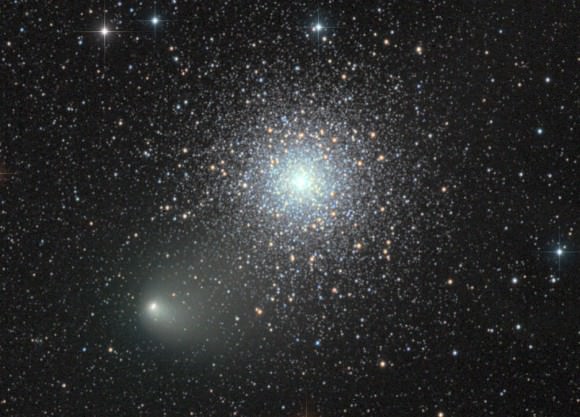
Looking like a fuzzy caterpillar, Siding Spring seems to crawl between the little globular cluster NGC 362 and the rich swarm called 47 Tucanae, one of the few globulars bright enough to see with the naked eye. C/2013 A1 is currently circumpolar from many locations south of the equator and visible all night long. Glowing at around magnitude +9.5 with a small coma and brighter nucleus, a 6-inch or larger telescope will coax it from a dark sky. Siding Spring dips farthest south on September 2-3 (Dec. -74º) and then zooms northward for Scorpius and Sagittarius. It will encounter additional deep sky objects along the way, most notably the bright open cluster M7 on October 5-6, before passing some 82,000 miles from Mars on October 19th.
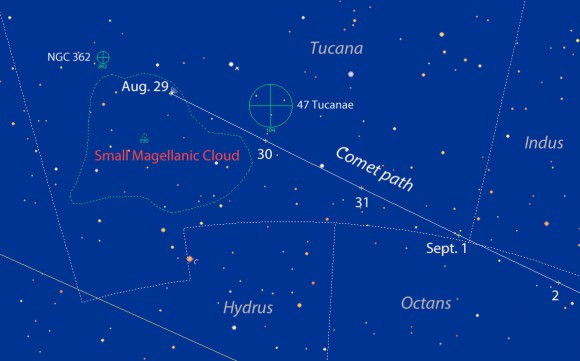
While the chance of a Mars impact is near zero, the fluffy comet’s fluffy coma and broad tail, both replete with tiny but fast-moving (~125,000 mph) dust particles, might pose a hazard for spacecraft orbiting the Red Planet. Assuming either coma or tail grows broad enough to sweep across the Martian atmosphere, impacting dust might create a spectacular meteor shower. Mars Rover cameras may be used to photograph the comet before the flyby and to capture meteors during its closest approach. NASA plans to ‘hide’ its orbiting probes on the opposite side of the planet for a brief time during the approximately 4-hour-long encounter just in case.
Today, Siding Spring’s coma or temporary atmosphere measures about 12,000 miles (19,300 km) wide. While I can’t get my hands on current dust production rates, in late January, when it was farther from the sun than at present, C/2013 A1 kicked out ~800,000 lbs per hour (~100 kg/sec). On October 19th, observers across much of the globe with 6-inch or larger instruments will witness the historic encounter with their own eyes at dusk in the constellation Sagittarius.

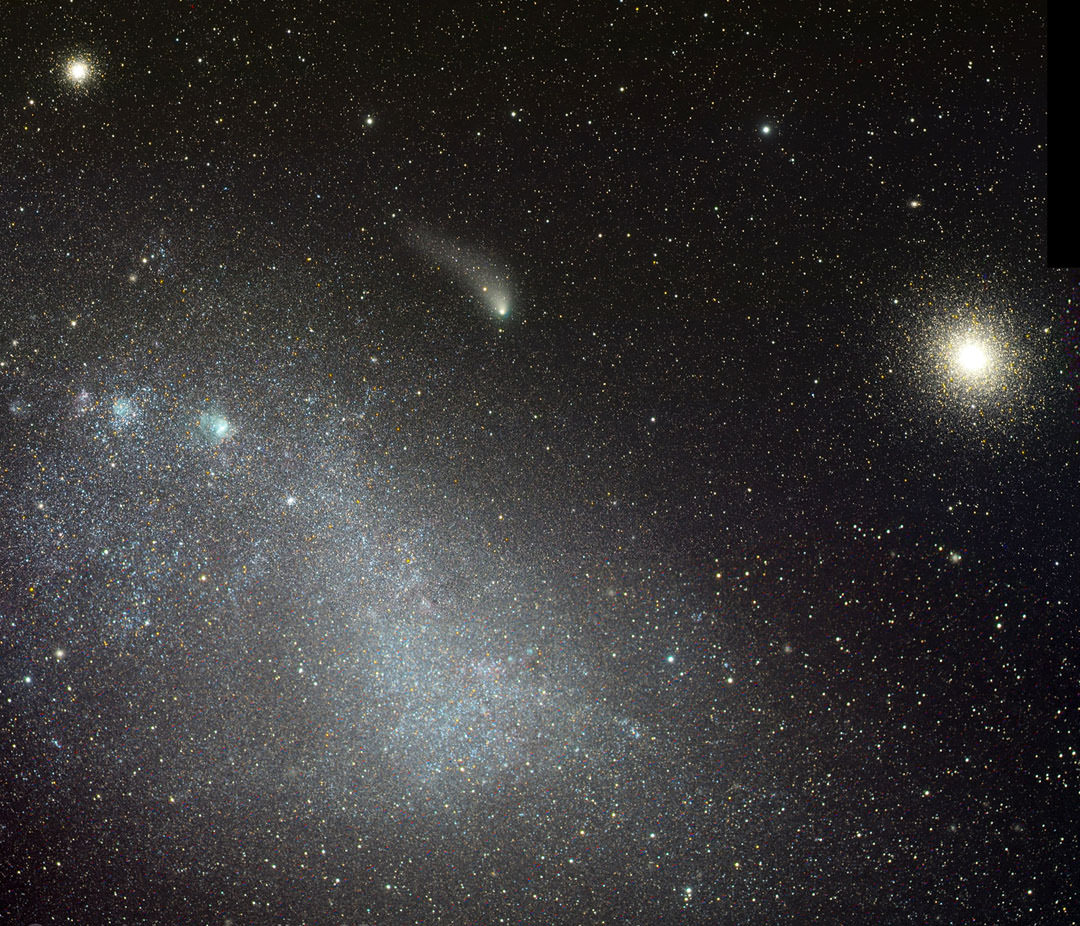


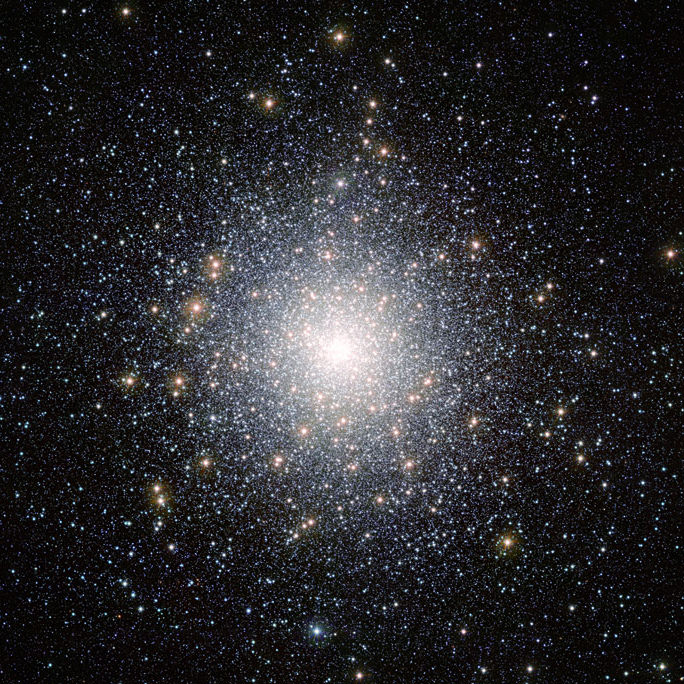
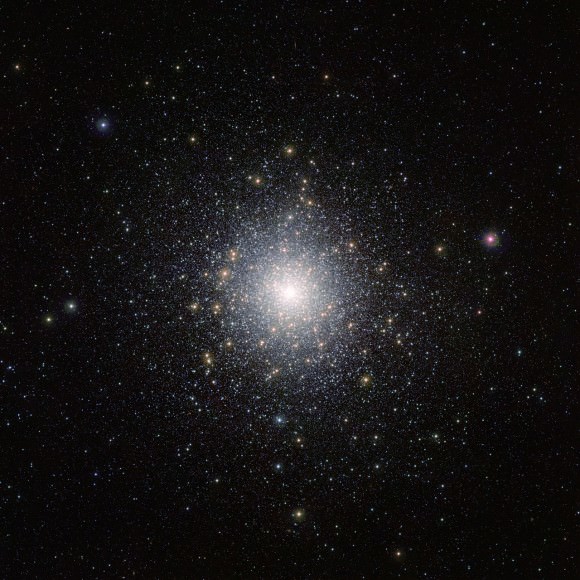
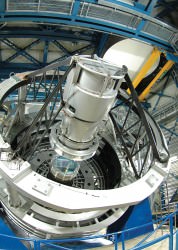 The background stars in the image are part of the Small Magellanic Cloud, which was in the distance behind 47 Tucanae when this image was taken.
The background stars in the image are part of the Small Magellanic Cloud, which was in the distance behind 47 Tucanae when this image was taken.